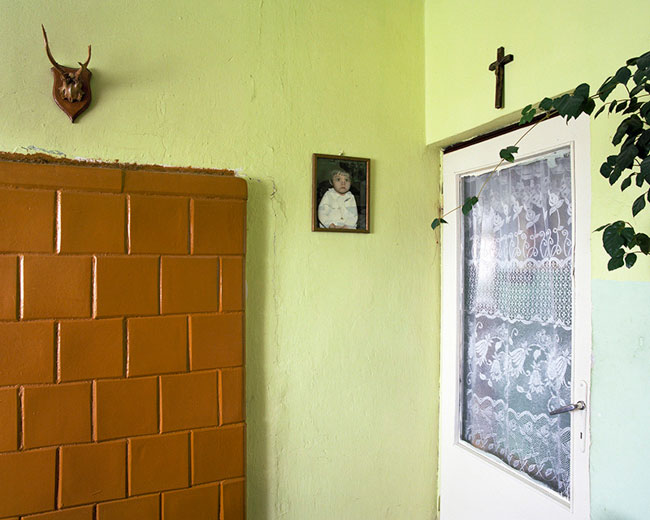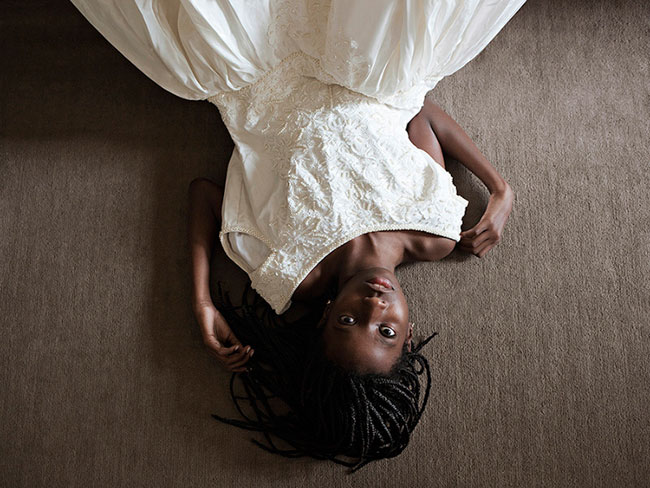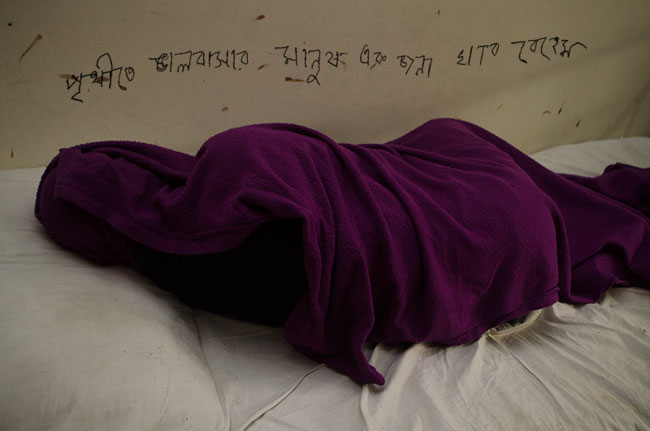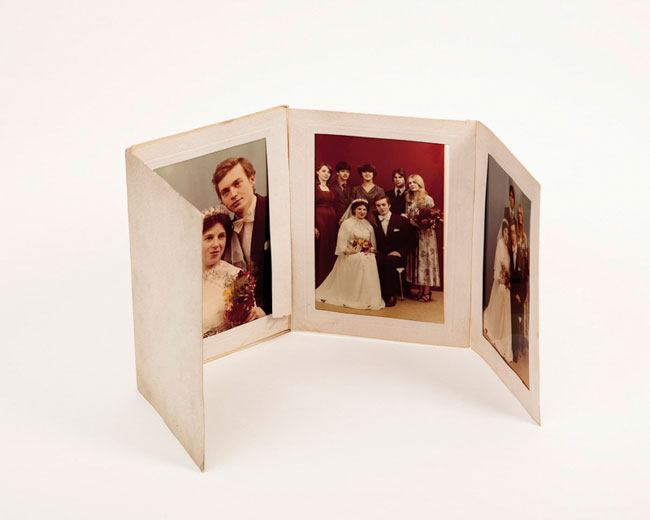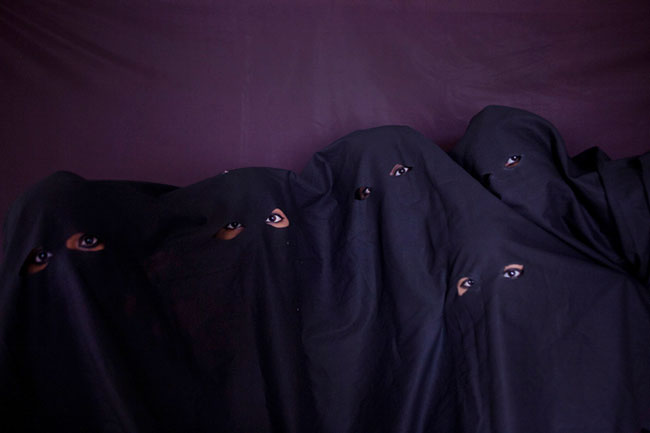Showing the work by the following artists:
THE FIRST PERIOD
by AGNESE SBAFFI (Italy)
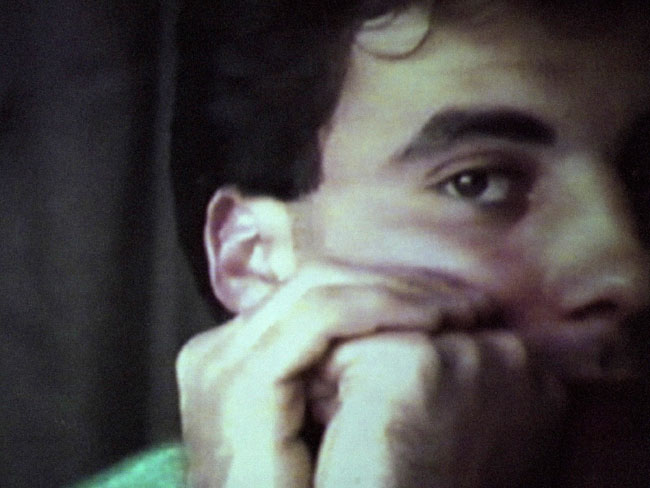
This is a search carried out in the dark with the help of a vague hope: to come across a secret. Here, the photographer examines hours of old movies from her childhood, made by her parents, which finally brings her close to the secret of explaining her to herself. In the dark of the projection, she digs up past memories in the only form available.
SEA BATHING
by GERARD STARON (France)
This series could be carried into another century, where the sea was reserved to a happy few –the sea shore painted by the impressionists. With a Polaroid image system, the photographer walks through the beaches of Normandy to rediscover the light from old times. He uses an old camera with out-of-date film in order to better retrieve the times that have passed.
MALANA
by HARIKRISHNA KATRAGADDA (India)
Malana, an isolated village in the Himalayas in India, with a population of about 1,700, is known to be hostile to outsiders, both because of its forbidding terrain and also a trenchant belief system that dubs outsiders as untouchables. This project documents how the village and its insulated ways of life are now finally opening up to the outside world.
THE PURPLE ROOM
by HELIO LEÓN (Ireland)
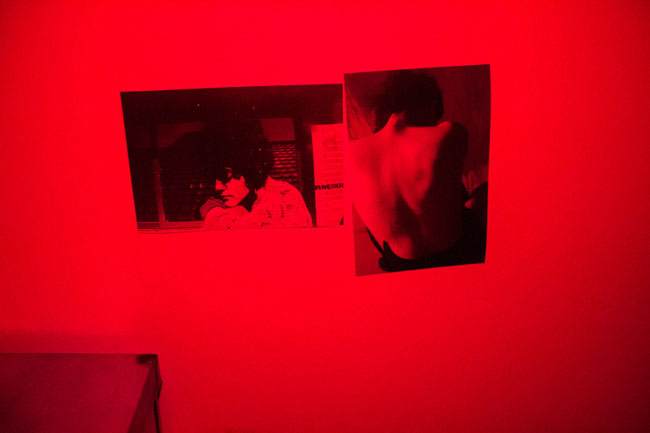
In a moment of mourning, the photographer returned to Istanbul, a city he was always emotionally connected with. When he found that the city itself was being destroyed, he found an echo of his own fears and obsessions. His connection with the city has always been very strong, finding himself in situations that recall the people and moments that affected him during his childhood and teenage years. The boundaries between reality, dream and imagination are blurred in this series of photographs.
LIFE IN FRONT
by IDA JAKOBS (France)
Life in Front is the fictive story of the photographer’s family. The work began when her grandmother found herself unable to go outside any more. She had two prisons: one of her head and the other of her bedroom in the hospital. Reality seemed uninteresting and the possibilities of the outside presented by photography appeared like salvation. Then her family arrived: her mum and her grandmother’s sister, to start a play about life, womanhood, death, motherhood, fading memory, grief, love and humor. Life in Front is a play that explores the reality of life, and the depth of its contradictions.
LOST
by KAROLINE JONDERKO (Poland)
They left clothes strewn around, unmade beds, open books, the TV turned on, as if they were about to come back soon. They left their rooms unprepared for emptiness.
Every year, the Polish police file 15,000 missing person reports. Every day, the faces of missing people gaze out from posters designed to attract our attention; yet, every passing day, they are noticed less.
MAYSA
by LUISA DORR (Brazil)
Maysa’s dream is to become Miss Brazil one day. But when the photographer met her, her mother didn’t even have money for her portfolio pictures. So Dorr took pictures for free and decides to follow her when she registered for the Miss Sao Paulo competition – taking photographs of her rehearsals, catwalk lessons and other preparations. Six months later, Maysa is chosen as “Miss Brazil Infant – Sao Paulo Black Beauty”, presenting her with an opportunity to carve a way out of a community entrenched in poverty, violence, racism and trauma.
NURA PAGLA / CRAZY BEAUTIFUL
by MARIE-CLAIRE LACEY (Scotland)
When people are told that they have a mental illness, they come to believe that they are irrational and incapable. Believing this causes them to become ashamed of their ways of thinking and acting, convinced that becoming ‘normal’ is the answer. This work documents the everyday routine of patients living in the National Institute of Mental Health in Dhaka, Bangladesh in an attempt to replace the dictatorship of dialogue. Facing the reality of loneliness, isolation and confusion, it is a tribute to the exemplary humanity of madness.
DECLARED DETACHMENT
by MARIYA KOZHANOVA (Russia)
The Declared Detachment series represents a generation born into times when organized society and established identity fell apart. This generation has lost its faith, its ideals and any meaning. Some of them made their way into the Japanese mass-culture of “cosplay” and a spectacular, superficial world of anime heroes. This generation escapes into a different ideology and tries to build its own illusory world. But are their beliefs true enough for a new establishment or just a temporary detachment from the imperfections of everyday life?
REWIND
by MARLENA JABLONSKA (Poland)
The project aims to change the way of looking at an environment. Photographing the everyday elements and everyday interactions of childhood memories, the work builds on the idea of space as a medium to remember things that one forgets in the heat of life.
LEAVE STAY
by RAFAL SIDERSKI (Poland)
Leave Stay is an attempt by the photographer to learn more about his deceased father, with whom he had only spoken to on the phone. The project is an attempt to explore his father’s personality, idiosyncrasies, character and traits, all through existing photographs. The photographs become a medium for him to search for answers to numerous questions, many of which he knows will remain unanswered.
LIFE IT WAS
by RAJAN SHRESTHA (Nepal)
After the 2015 Nepal Earthquake, the question “What is life, anyway?” constantly rang inside the photographers head. Later, when he took his 10-year old nephew to visit the natural history museum, he saw traces of life, in the embryonic forms preserved there.
GLOOMY SUNDAY
by SALMA ABEDIN PRITHI (Bangladesh)
This work is a social narrative that confronts the artist’s upbringing as a woman and questions her fears and desires. Using the iconography of a young, married and unemployed woman, she explores issues of alienation, domesticity, exploitation, fantasy and disguise. She uses this very technique to question if sexual ritual, religious symbolism and political or social rituals overlap.
TALES OF MOROCCAN AMAZONS
by ZARA SAMIRY (Morocco)
Tbourida refers to the traditional horse-riding shows that celebrate the historic military art of the Berber-Arabs and simulate their warring assaults on horses. This art form was commonly reserved for men, women typically stayed in the audience. But in recent years, young women have started to challenge this tradition. Female horse-riders, the new Amazons of today, are attempting to make their own mark in what was previously seen as an exclusive patriarchal practice.





